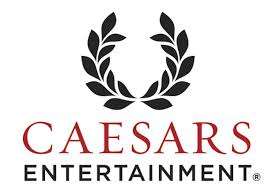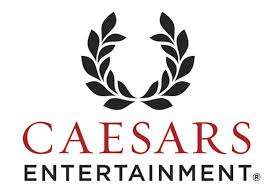New York Judge Rules Against Caesars Reorganization in Debtor Lawsuit
Caesars Entertainment Inc.’s ongoing plans to reorganize its corporate structure encountered a significant setback on Monday when a New York-based federal judge ruled that the company had violated federal creditor laws in the process of shuffling casino properties and outstanding debt among several corporate units.
 The ruling by Manhattan-based US District Judge Shira Scheindlin immediately imperils the bankruptcy plan for Caesars’ largest operational unit, Caesars Entertainment Operating Co. (CEOC). The CEOC unit, which last week became the subject of two separate Chapter 11 bankruptcy filings in Delaware and Illinois, may well see its reformation halted and some of its previous transactions unwound, if an aggrieved debtor group has its way.
The ruling by Manhattan-based US District Judge Shira Scheindlin immediately imperils the bankruptcy plan for Caesars’ largest operational unit, Caesars Entertainment Operating Co. (CEOC). The CEOC unit, which last week became the subject of two separate Chapter 11 bankruptcy filings in Delaware and Illinois, may well see its reformation halted and some of its previous transactions unwound, if an aggrieved debtor group has its way.
The CEOC unit figures in the ruling by Scheindlin. Last August, a group of debtholders filed suit against Caesars, alleging that the company was loading the CEOC operational unit while transferring most of the company’s profitable properties out of CEOC and under the ownership and control of other Caesars corporate entities.
Though the recent CEOC bankruptcy filings prevented Scheindlin from ruling specifically on the CEOC complaints, she was able to rule on the lawsuit regarding parent Caesars (CEI). Scheindlin, in agreeing with the plaintiff debtholders who brought the suit, ruled that Caesars had violated a 1939 federal statute, the Trust Indenture Act, which is designed to protect debtholders regarding the sale of assets by corporate entities.
A series of corporate transactions made in August, along with a unilateral removal by Caesars of certain creditor guarantees, provided the impetus for the debtholder lawsuit, which was filed in early September. The plaintiff debtholders include Trilogy Portfolio Company, L.L.C., Cfip Ultra Master Fund, Ltd., SB 4 CF L.L.C., Relative Value-Long/Short Debt Portfolio and Meehancombs Global Credit Opportunities Master Fund, LP.
Both CEI and CEOC were named as defendants in the original lawsuit.
SEC filings regarding CEOC’s planned bankruptcy show that the so-called “second lien” group of debtholders, which include the above plaintiffs, would largely receive the short end of the proverbial financial stick. Under Caesars’ current reorganization plans, roughly $10 billion of the current $18.8 billion in debt on the CEOC books would be wiped away, and much of that would be at the direct expense of these second-lien debtholders.
All told, the aggrieved shareholder groups collectively hold over $5.2 billion in bad CEOC debt, but would receive a maximum of $549 million — a little over 10 percent — under Caesars’ preferred reorganization plan.
Meanwhile, the first-lien CEOC debtholders have negotiated far more attractive terms regarding their debt, and are set to receive between 92 and 95 percent of their existing debt balances under bankruptcy reorganization, according to various sources.
In addition, the Caesars-preferred bankruptcy reorganization would protect the initial $1.7 billion in investment injected by Apollo Global Management and TPG Capital Management, the two equity firms that orchestrated the highly leveraged — and now widely described as failed — buyout of Caesars (then Harrah’s) back in 2008.
Additional terms of Caesars bankruptcy plans, as detailed in the SEC filings, leave corporate control in the hands of Apollo and TPG. Apollo is run by Leon Black and TPC remains under the control of David Bonderman.
The New York lawsuit, the involuntary Delware bankruptcy filing against CEOC by others of CEOC’s second-lien debtholders, and CEOC’s own attempted voluntary filing in Illinois represent what’s likely to be a pitched battle for control of both Caesars assets and the company itself.
Caesars itself had attempted to have the New York lawsuit dismissed, and a motion to that affect was dismissed last Thursday by Judge Scheindlin. Scheindlin sealed the part of her opinion and order as it pertains to the CEOC operating unit, as was mandated by the rules governing the first bankruptcy filing, the one in Delaware. However, Scheindlin remained free to issue her ruling regarding the other corporate defendant, parent company Caesars.
Scheindlin agreed with the plaintiffs, writing, “Thus, as alleged in the Complaint, removal of the [debtholder] Guarantees through the August 2014 Transaction is an impermissible out-of-court debt restructuring achieved through collective action.” In other words, Scheindlin ruled that Caesars removed without debtholder approval the very CEOC assets that the debtholders needed to have reasonable expectations of collecting the CEOC debt.
Caesars quickly issued a brief statement in which it asserted that, “Given the size of the claims at issue and our strong defenses, we do not expect the ruling to impact the planned reorganization.” That remains to be seen. At the least an extensive renegotiation of terms involving all creditor classes is likely to ensue, and if that fails, then many internal transfers could be unwound, with Caesars ultimately at a small risk of being broken up into smaller pieces.
Such a breakup, though not a high likelihood at present, would impact all Caesars properties and brands, whether part of the CEOC umbrella or not.
The next step in this complicated battle will likely be further hearings in the Delaware bankruptcy case.




















COMMENTS